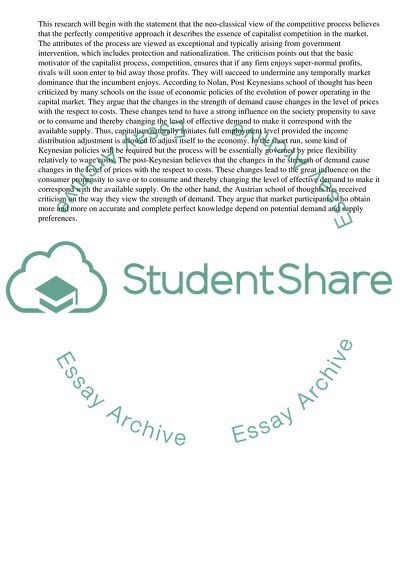Cite this document
(“Austrian and Post-Keynesian Criticisms of the Standard Neoclassical Essay - 1”, n.d.)
Austrian and Post-Keynesian Criticisms of the Standard Neoclassical Essay - 1. Retrieved from https://studentshare.org/business/1585714-compare-and-contrast-austrian-and-post-keynesian-criticisms-of-the-standard-neoclassical-view-of-the-competitive-process
Austrian and Post-Keynesian Criticisms of the Standard Neoclassical Essay - 1. Retrieved from https://studentshare.org/business/1585714-compare-and-contrast-austrian-and-post-keynesian-criticisms-of-the-standard-neoclassical-view-of-the-competitive-process
(Austrian and Post-Keynesian Criticisms of the Standard Neoclassical Essay - 1)
Austrian and Post-Keynesian Criticisms of the Standard Neoclassical Essay - 1. https://studentshare.org/business/1585714-compare-and-contrast-austrian-and-post-keynesian-criticisms-of-the-standard-neoclassical-view-of-the-competitive-process.
Austrian and Post-Keynesian Criticisms of the Standard Neoclassical Essay - 1. https://studentshare.org/business/1585714-compare-and-contrast-austrian-and-post-keynesian-criticisms-of-the-standard-neoclassical-view-of-the-competitive-process.
“Austrian and Post-Keynesian Criticisms of the Standard Neoclassical Essay - 1”, n.d. https://studentshare.org/business/1585714-compare-and-contrast-austrian-and-post-keynesian-criticisms-of-the-standard-neoclassical-view-of-the-competitive-process.


